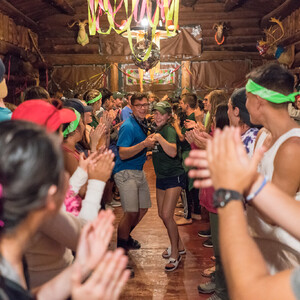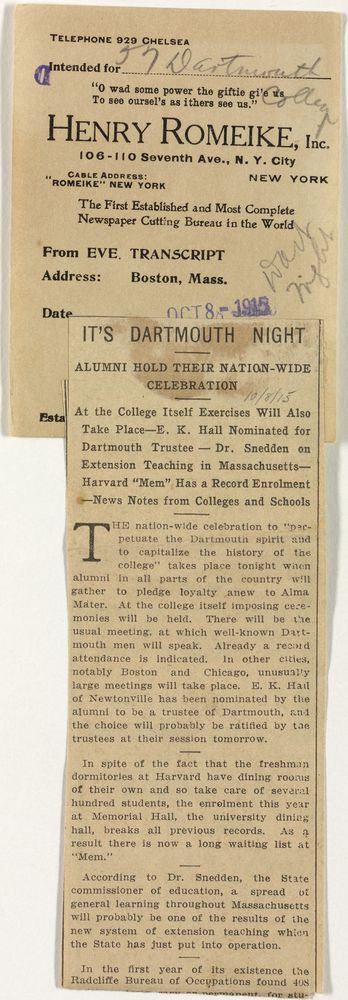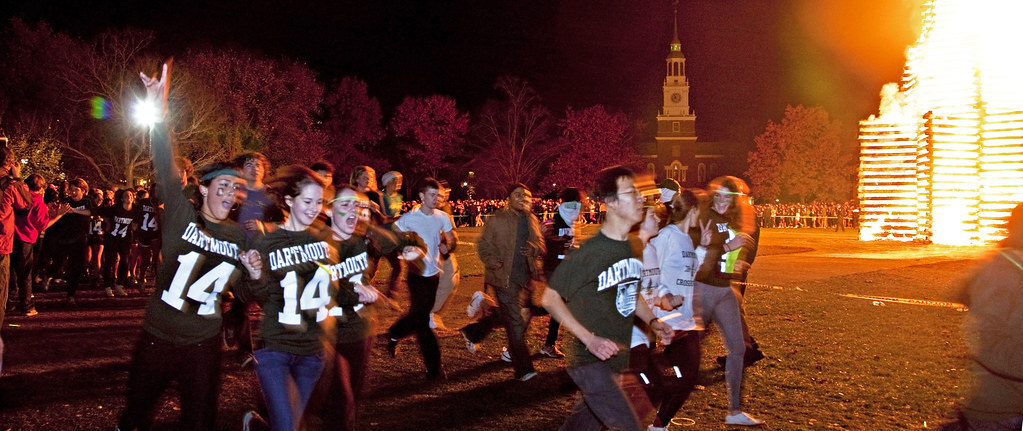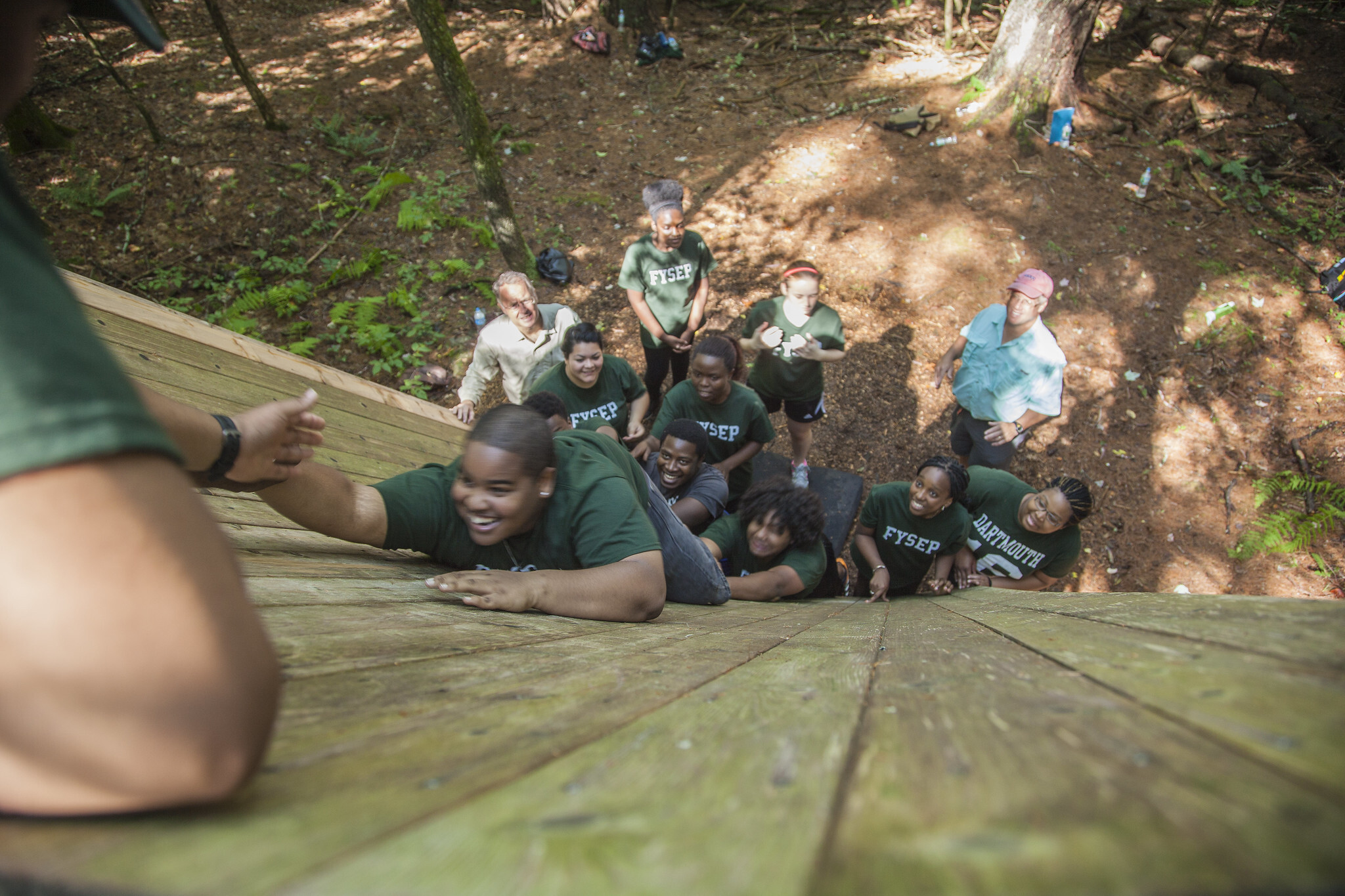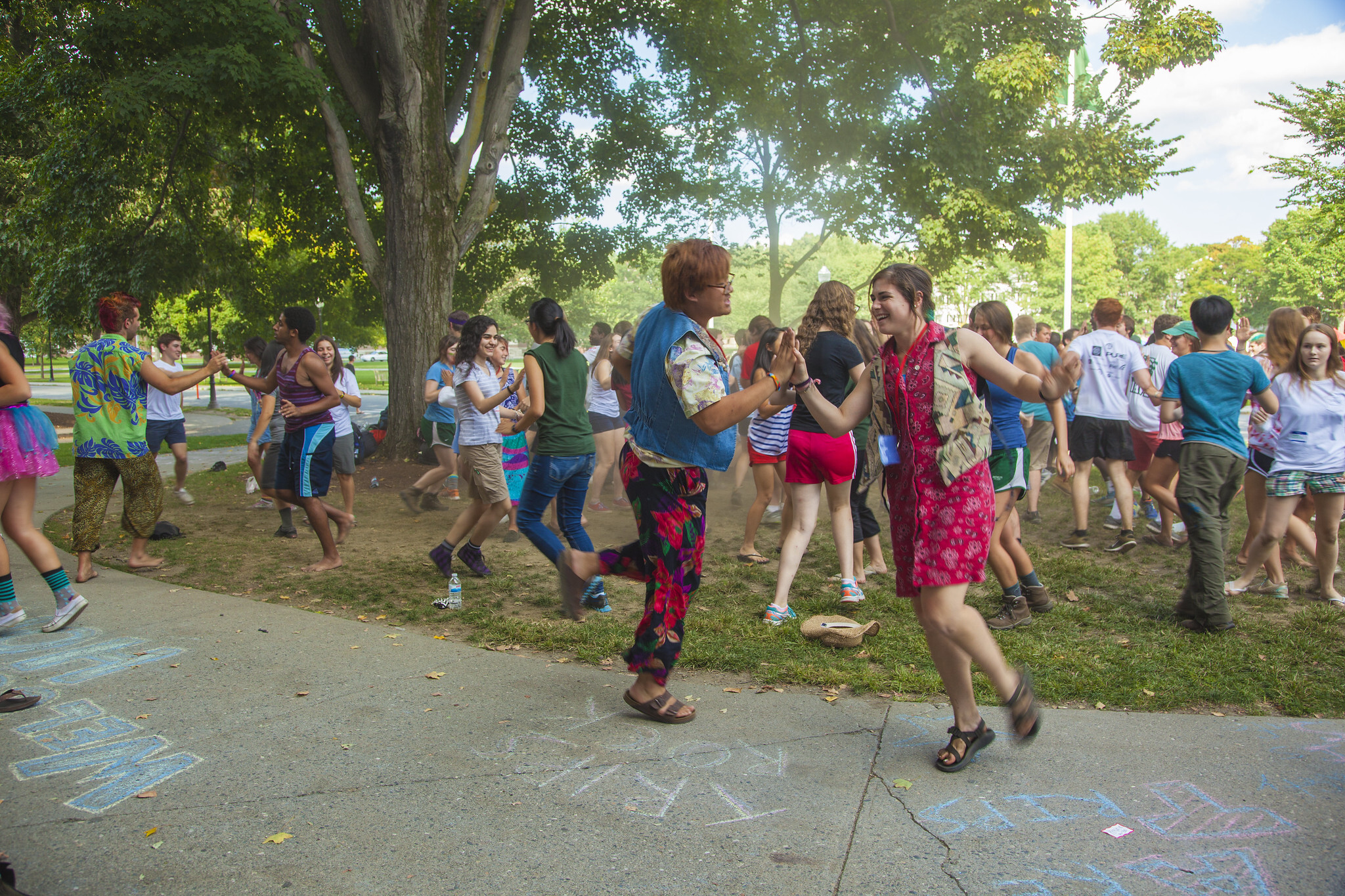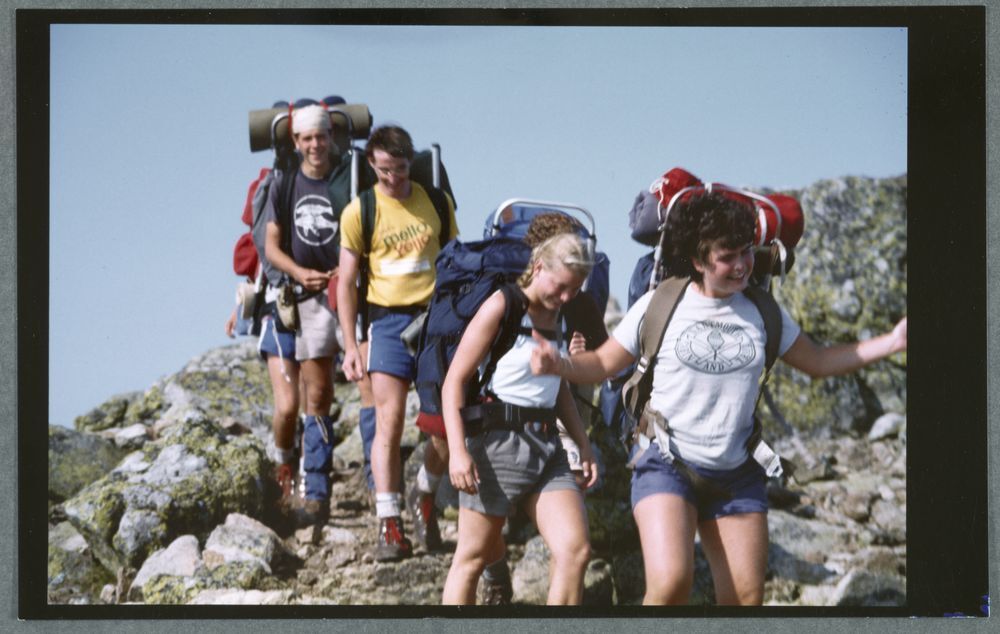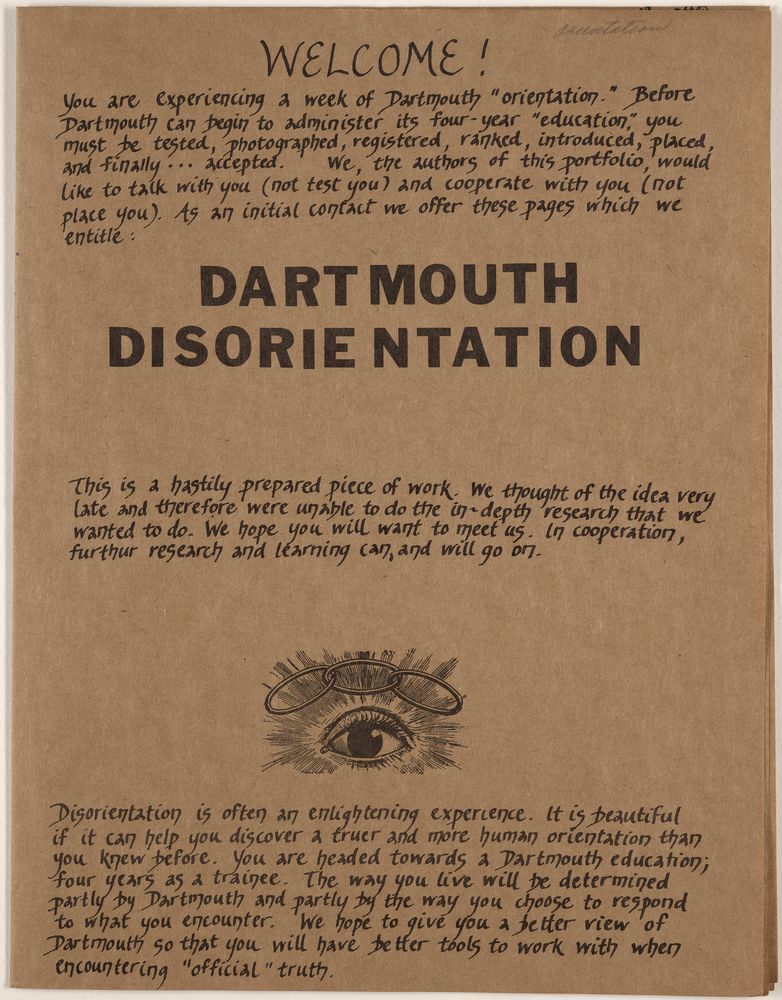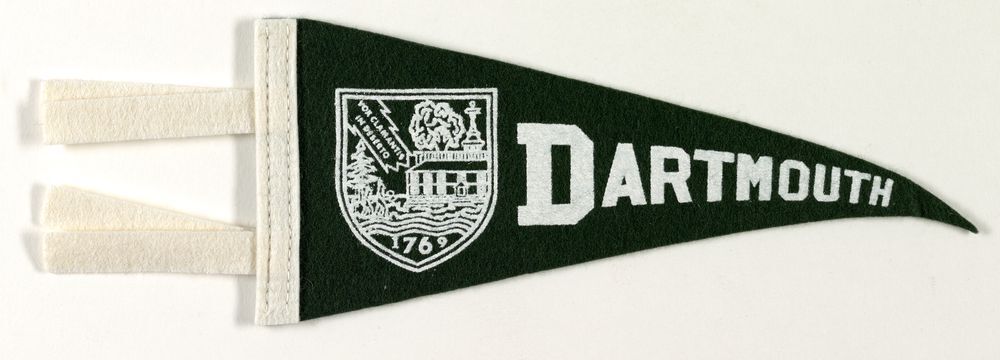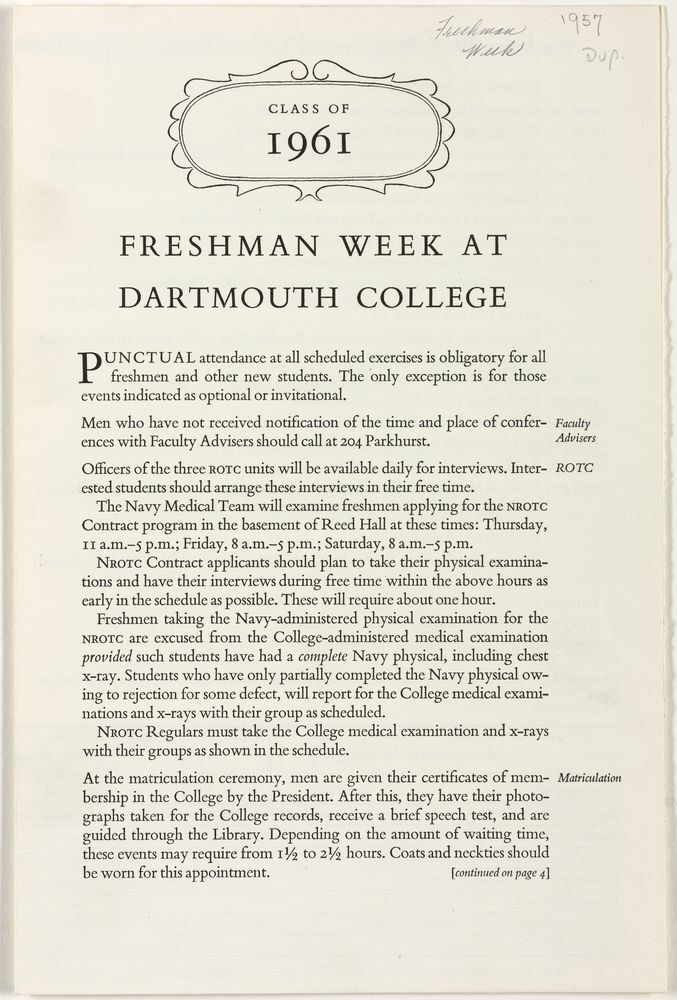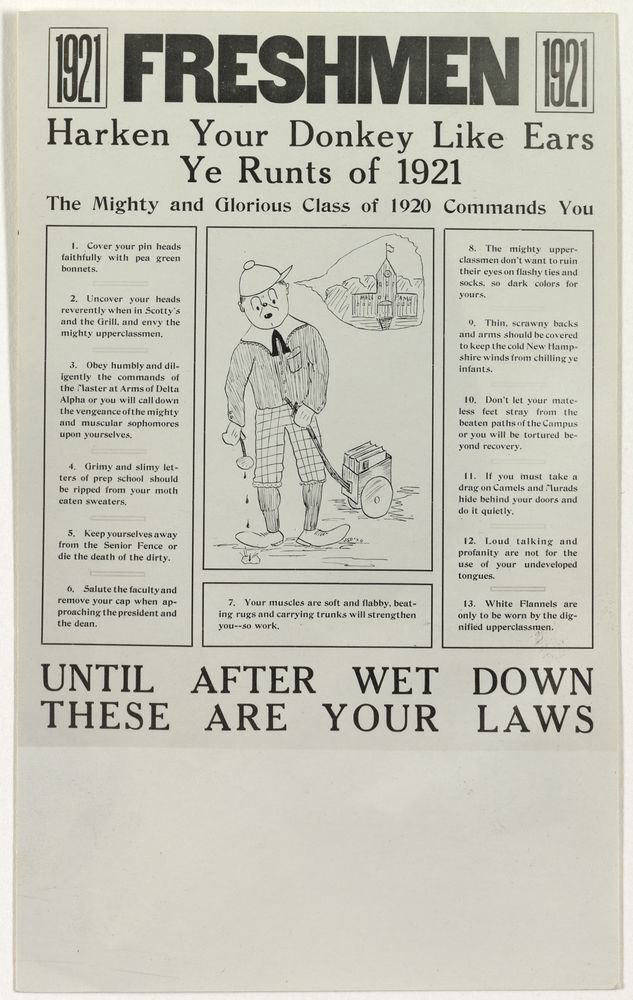Coming to Dartmouth
Early first-year student experiences differed from what you see now. “Freshman Week” programs of the mid-20th century focused heavily on placement tests and medical examinations and less on building community. For years, Dartmouth upperclassmen had some very specific requirements for how first-years could be accepted into the Dartmouth community which meant wearing “freshman beanies” and following “freshman rules.” Those caught without their beanies on could be dealt some embarrassing punishments by the older students.
Modern pre-orientation and orientation programming focus on helping students find a place in the Dartmouth community and build connections with other students, faculty, and staff. Since the late 1980s, the student-directed First-Year Trips program has worked to include all new students, now maintaining a participation rate above 90%. Trips facilitate students’ first experiences with their peers in the Dartmouth community, dancing in front of Robinson Hall and gathering at the Moosilauke Ravine Lodge. First-year students participate in campus traditions, such as Dartmouth Night, that have evolved across many generations.
“With every new class comes an opportunity to meet new people who are going to help change you. They impact your life, and I love that. That’s why fall is my favorite term at Dartmouth because you get to meet this whole new group of people.” – Oral history interview with Maia Matsushita ’13
Next: Living Communities

